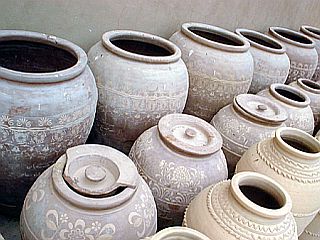
Most Slovenians know Ljubno as a small village by the side of the main freeway running between Ljubljana and northwestern Slovenia. Like many other settlements in the Upper Carniola province, Ljubno consists of picturesque Alpine-style homes scattered on a local hill. In years gone by, however, Ljubno was known far and wide for a tradition that provided a livelihood to generations: the craft of pottery making.
Pottery making began in Ljubno because there was too little land available for farming, which forced many locals to look for alternate sources of income. As it turned out, the soil around their village was rich in clay, making it perfectly suited to pottery making. It’s not known exactly when the first potters – known locally as “čpinarji” -- set up shop in the area, but the first records mentioning the craft date back to 1538.
At first, Ljubno craftsmen supplied pots used in the process of mercury extraction at the Idrija mercury mine, but when mining techniques changed and their pots were no longer needed, the potters extended their range and began to sell their products to homes around the region. Soon, “čpinarji” established a guild and become famous for the quality of their pottery.
Some of the Ljubno potters’ designs were simple, but they also produced a number of specialized items, ranging from pots used to bake sausages, to clay containers in which farmers could store butter and vinegar. They became particularly famous for their intricately decorated dishes, but they eventually made all kinds of objects from clay – including bricks used to build homes.
With the advent of industrialization, the venerable local began to decline. At the beginning of the 20th century, there were nine potters still active in the village, but by World War I, only two remained. Even a last-minute shift to the manufacture of clay stoves did not halt the decline, and the centuries-old craft ultimately died out.
Stories of the legendary “čpinarji” remained alive and well, however, and continued to be passed down from generation to generation. Some locals began to collect the remaining pottery and organized occasional exhibits. With a renewed interest in old Slovenian traditions, several hobbyists decide to revive the craft. They make pots the old fashioned way, and they then sell them at local markets.
Even members of the local soccer team have embraced the village’s traditional craft: They are known as the Ljubno Čpinarji.

































































